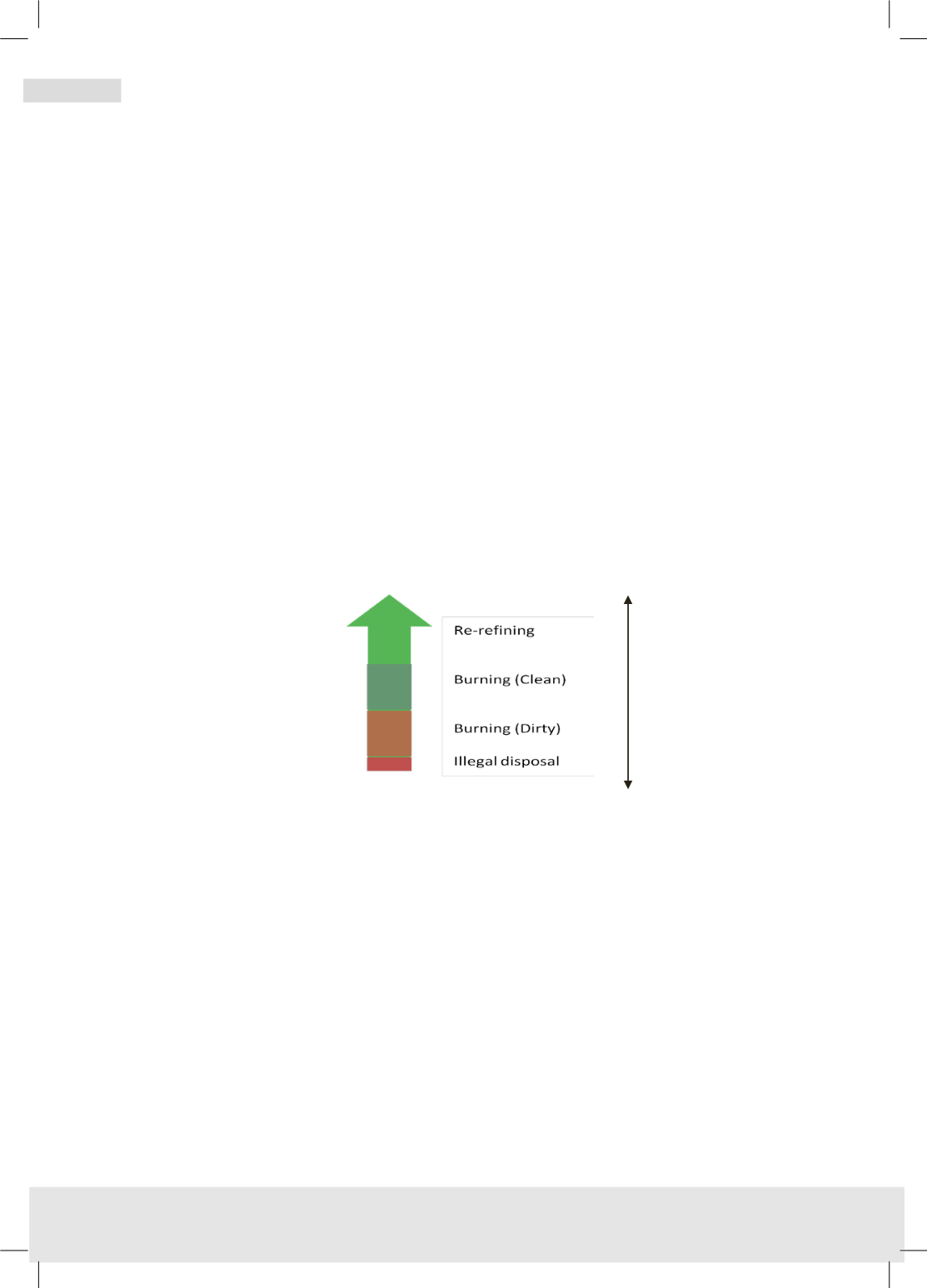

176
2016
أوابك العلمية لعام
�
ص لبحوث العلمية الفائزة بجائزة
�
عدد خا
مجلة النفط والتعاون العربي
161
العدد
- 2017
أربعون
المجلد الثالث و ال
Re-refining of Used Lubricating Oil and its Economic and Environmental Implications
53
contaminated spot to return to a healthy condition (Avadhut, 2011). What´s more,
harmful impacts include toxic contamination, destruction of food resources and habitats
and impaired reproductive capability.
In view of the foregoing, although re-refining of used lubricating oils is an expensive
option and requires skill and expertise, on the question of environmental impacts it is
by far the most viable option. The choice between re-refining and the energy recovery
method (i.e. burning) depends upon the environmental legislation and the market
conditions prevailing in the concerned country. GEIR (2005) advises to give priority to
re-refining “insofar as there is no indication by life cycle assessment that there are
options which deliver better overall environmental outcome”. The waste management
hierarchy is illustrated in Figure 29. Re-refining of used lubricating oil is ranked as the
best option in the waste hierarchy by the European Waste Framework Directive
2008/98/EC.
Figure 29 Used oil disposal hierarchy
7
Economic viability of the re-refining process and its role in improving
the added value of oil industry
and natural resources conservation.
7.1
Economic viability of the re-refining process
From the environmental perspective, re-refining is certainly the most preferred
recycling option. However, its economic viability depends, at the project level, on the
Best solution
Worst solution
















